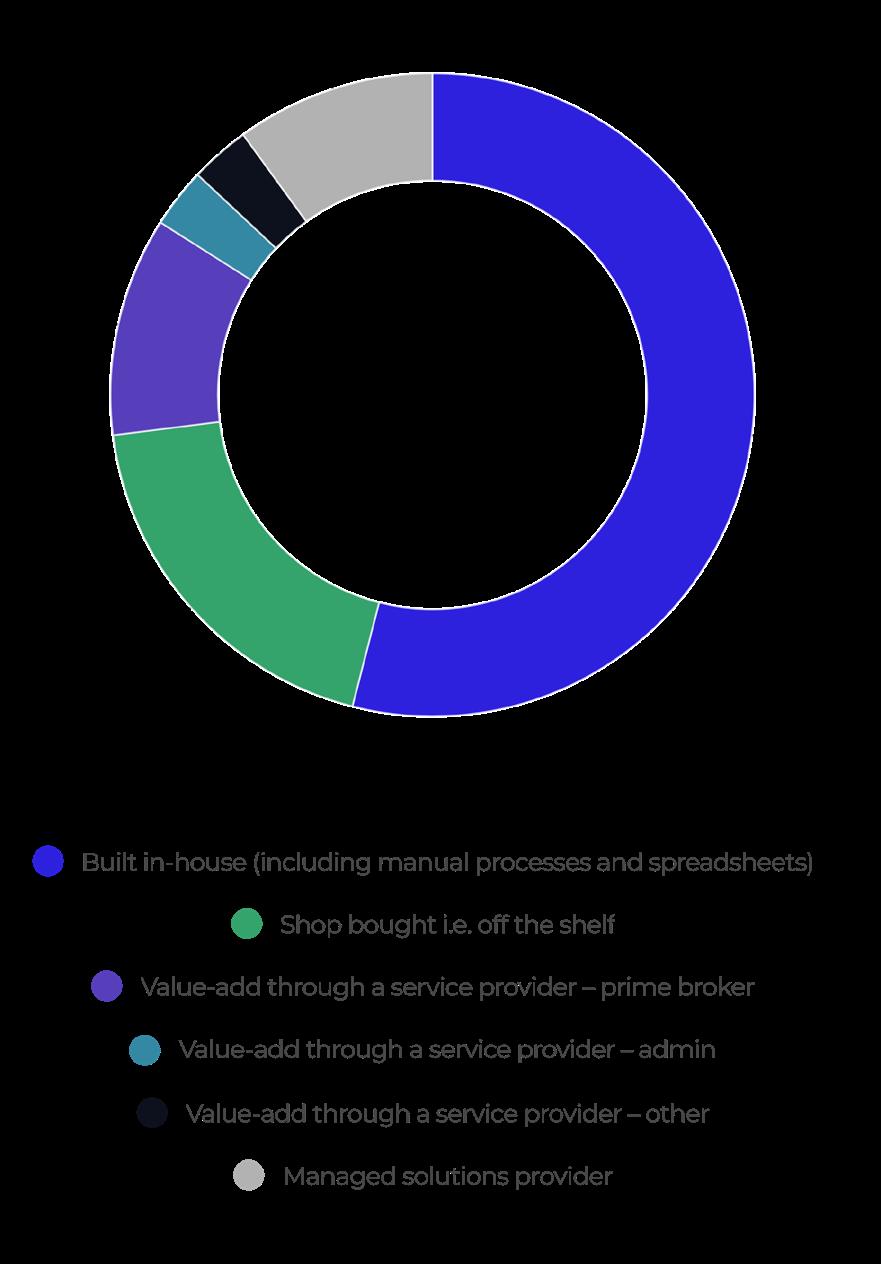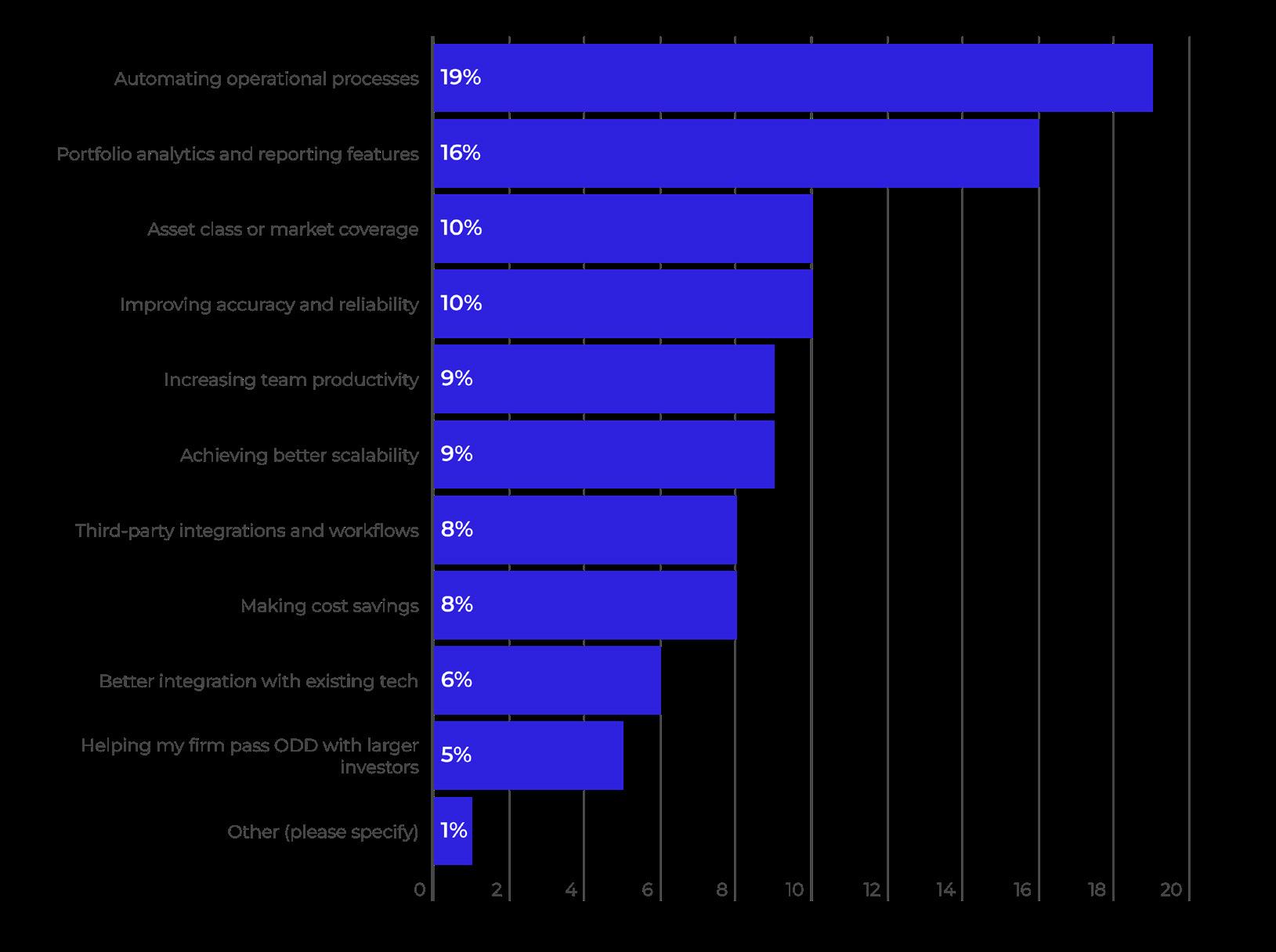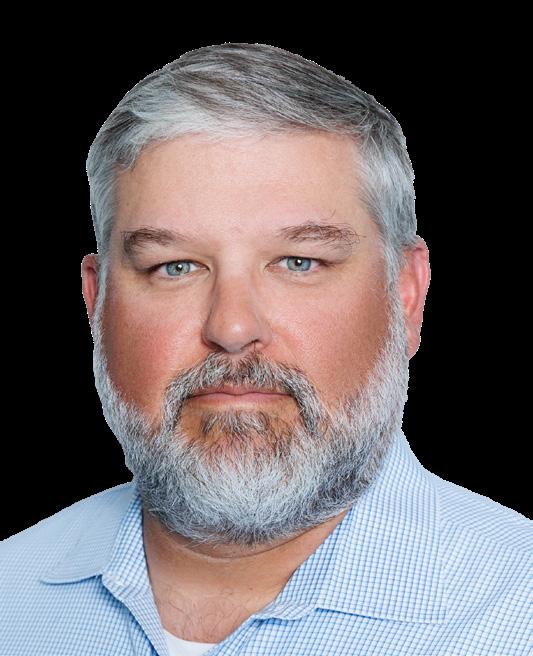



100 EMERGING MANAGERS: PRIORITIES AND PAIN POINTS IN REAL TIME
JUNE 2024
EXECUTIVE SUMMARY
In this bespoke Hedgeweek report, we surveyed 100 emerging hedge fund managers to better understand their biggest needs.
Emerging hedge fund managers have complex information, risk management and order management demands. They require increasingly sophisticated and integrated technology, a need that goes largely unmet and was historically addressed by remnant systems that are outdated and lagging behind today’s world of real-time information and decision-making.
A profusion of critical decisions face hedge funds in high-growth mode. These decisions each can have a direct impact on efficiency, trading desk interoperability, daily time constraints and, ultimately, on scalability.
New hedge funds have a raft of priorities to consider simultaneously. But few are more important than having a portfolio management system in place that allows for smooth trading, rigorous compliance and faultless information flow. In the sub-$500m AUM range, the choice is between developing your own system and outsourcing, with a strong shift towards the latter seen in recent years.
Part 1 reveals the lay of the land before Part 2 digs into problem-solving. What are the pain points facing emerging managers and what solutions are on offer to help them? What are the key challenges and how do satisfaction levels compare?
Using the right technology solves pain points over performance, resource and cost. Meeting the challenge has never been more important in giving growing hedge funds the time and space to focus on what they are best at: driving alpha
OVERVIEW CLEAR STREET | JUNE 2024 | 2
WILL WAINEWRIGHT HEAD OF HEDGE FUND RESEARCH CONTENTS KEY FINDINGS PART 1 STATE OF PLAY 4 5 PART 2 SYSTEMS AND OPERATIONS 12 METHODOLOGY 3 CONCLUSION 19
We surveyed 100 hedge funds. Here is the breakdown by location, AUM and strategy:

METHODOLOGY
A key source of data in this report is the results of Hedgeweek’s hedge fund manager survey conducted in Q1 2024. Further insights in this report were gathered during interviews in April and May 2024 with named and unnamed industry sources, and additional third-party sources.
METHODOLOGY CLEAR STREET | JUNE 2024 | 3
Location AUM Investment approach 85% are US/EU 79% manage <$100m 62% are non-traditional
KEY FINDINGS
These are active traders, with unique needs
Emerging managers may be small in asset terms but are highly active traders. A third of hedge funds managing up to $500m typically make at least 100 trades per day (see Fig 1.1). A further 12% make between 51 and 100, and another 14% make between 26 and 50.
2
Too much reliance on manual processes
Just over half (54%) of hedge funds in the sub-$500m bracket have built their own PMS in-house. Many of these managers admit – and are only too well aware – that their system relies on manual processes and spreadsheets. There is a wide variation in outsourcing practices among emerging managers.
Solution v cost
Cost is not usually a barrier – it’s more about the fit. Providers need to be laser-focused on solutions for clients, which often have varying demands. All are unique. Providers need to show that an all-in-one piece eliminates the need for integration and provides ease of ownership and infrastructure management, a single home stereo rather than many parts cobbled together.
4
Performance is pivotal
It all comes down to alpha. Outperformance versus peers is always a key consideration, especially in an increasingly intense competitive environment. New hedge funds are targeting non-correlated returns in the new interest rate environment, putting more pressure on CIOs to perform at their peak, which requires real time data.
KEY FINDINGS CLEAR STREET | JUNE 2024 | 4
1 3
DRIVING ALPHA
Small and mid-sized hedge fund managers juggle an array of conflicting priorities in their journey to scale. From trading systems to back office operations, resource allocation decisions are critical. Firms that get it right can give PMs the best chance driving priority number one: Alpha.
This report is focused on priorities and pain points at small- to mid-sized hedge funds, managing anything up to $500m.
These firms vary by strategy and location, but are united by several factors common to all firms with emerging capital bases: a lean headcount, big pressure on costs and a constant need to keep close tabs on a range of priorities.
Getting efficient and accurate front office systems in place can sometimes fall down the priority list but has rarely been so important. Portfolio management systems provide access to risk and margin, exposures, P&L and analytics reports, and much else – information which when easily accessible allows PMs to focus on maximising alpha. All other front office
concerns, from trade time to cost to ease of execution, should be secondary to this. But only when the correct systems are in place. Emerging managers may be small in asset terms but are highly active traders. A third of hedge funds managing up to $500m typically put on at least 100 trades per day (see Fig 1.1). A further 12% make between 51 and 100, and another 14% make between 26 and 50. Just 40% make 25 or fewer a day, a finding which runs counter to the conventional wisdom that smaller hedge funds are often quiet on the trading front.
Higher levels of activity, particularly the 100-plus daily range, call for robust systems and processes to maximise trading efficiency and ensure smooth running of the business. Hedgeweek’s

PART 1: STATE OF PLAY CLEAR STREET | JUNE 2024 | 5
Fig. 1.1 Typically, how many trades does your management firm make a day?
Trades per day
Source: Hedgeweek Hedge Fund Manager Survey Q1 2024
Most popular instruments/asset classes

survey of emerging managers found that small and mid-sized firms are not only more active than assumed, but also trading in a broader range of asset classes and instruments.
Respondents were asked to select which asset classes or instruments they traded (see Fig. 1.2). Half of respondents traded equities and 61% derivatives, while bonds (22%), FX (24%), crypto (36%) and ETFs (27%) were also well represented.
The next series of questions revealed just how many hours per week small and mid-sized hedge funds are spending on manual processes related to a series of functions. For manual processes related to reporting and data aggregation, more than half (52%) are spending between five and ten hours per week. For a further 24% it is between 11 and 30.
When it comes to trade processing, allocations and middle office roles, almost two-thirds (64%) are spending between five and 20 hours per week. The percentages are similar as regards reconciliations, corporate actions and the back office; and also data flows with third parties.
Source:
PART 1: STATE OF PLAY CLEAR STREET | JUNE 2024 | 6
Fig. 1.2 Which of the following instruments and asset classes does your management firm trade?
Hedgeweek Hedge Fund Manager Survey Q1 2024 (multi-selection question)
The biggest pain point facing emerging managers varies depending on the size of the business:
For <$25m firms: For $25m-$250m firms: For $250m-$500m firms:

Helping my firm pass ODD with larger investors (19%)

Portfolio analytics and reporting features/ achieving better scalability (tied on 14%)

Achieving better scalability (26%)
Source: Hedgeweek Hedge Fund Manager Survey Q1 2024. Respondents were given 10 options. This key finding features the most selected option for each size bracket of firm.
OVERVIEW PRIVATE EQUITY WIRE INSIGHT REPORT FEBRUARY 2023 | 7
KEY FINDING
These findings speak to the sheer time burden of many of these functions, which may fall on a single employee at small or mid-sized hedge funds with multiple other demands. Automating processes is a clear way of delivering efficiencies in this area, a subject explored more fully in the box-out in part 2.
“Automation is a clear way of achieving scale and removing opportunities for human error in data entry,” says Jud Howson, Head of Institutional Product at Clear Street. “It gives extremely constrained hours back to a company. If you’re under $500m, you might have one employee that’s a non-trading professional, maybe two. Their attention is more productively spent elsewhere.”
This section of the report is covering the state of play when it comes to the front offices of small and mid-sized hedge funds. Before the next section, which covers solutions, it is important to consider what challenges they will face as they seek to grow (see Fig. 1.4).
Achieving better scalability was unsurprisingly the most popular response (picked by 22%), followed by helping the firm pass ODD with larger investors (17%) and portfolio analytics and reporting features (14%).





PART 1: STATE OF PLAY CLEAR STREET | JUNE 2024 | 8
Fig. 1.3 Approximately how many hours per week does your management firm spend on manual processes related to the following functions?
Source: Hedgeweek Hedge Fund Manager Survey Q1 2024
Reporting and data aggregation
Trade processing, allocations, middle office
Reconciliations, corp actions, back office
Data flows with 3rd parties
“
All funds are unique and vary slightly in terms of requirements. The challenge from the buy-side perspective can be working out if providers do offer everything you need.
Phillip Chapple COO, Monterone Partners
OVERVIEW PRIVATE EQUITY WIRE INSIGHT REPORT FEBRUARY 2023 | 9

A further three challenges were each picked by the same proportion, 12%:
Asset class or market coverage
Making cost savings
Better integration with existing tech
Automating operational processes and increasing productivity were next on 11%.
Answers varied by size. Portfolio analytics and reporting features/achieving better scalability were tied at 14% among $25m-$250m firms, while achieving better scalability was top for $250m-$500m firms (26%).
How can you start thinking about building a front office system that works smoothly and allows employees to focus on their key priorities, whether alpha generation, asset-raising or building the business?
“Unless you are a big firm with legacy systems in place you tend to start afresh,” says Phillip Chapple, COO of Monterone Partners in London.
“There can be a lot of complexity, but things have improved. Say 15-20 years ago you had to buy lots of different
PART 1: STATE OF PLAY CLEAR STREET JUNE 2024 | 10
Fig. 1.4 Respondents were asked which capabilities they consider to be pain points or barriers to growing their fund. Multiple selections permitted.
Source: Hedgeweek Hedge Fund Manager Survey Q1 2024 (multi-selection question)
Top pain points
services which were pieced together by firms, but that created a lot of challenges making the various parts speak to each other and creating the connectivity in terms of reconciliation and flows.”
Things have moved on in terms of solutions, but the complexity facing firms has not.
“All funds are unique and vary slightly in terms of requirements. The challenge from the buy-side perspective can be working out if providers do offer everything you need,” adds Chapple.
What does this mean in practice? Starting with their traditional architecture, firms operate on fragmented platforms based on deep and inflexible technology. In many cases, large amounts of custom code have built up over time to manage tasks that legacy systems were never designed to support.
This means that near-obsolete technology may still be in use because data cannot be changed, application programs cannot be upgraded, or it is heavily integrated into a firm’s functions. Over time, some firms have acquired technology from newer vendors to live on top of legacy systems. Still, these pseudo-modern solutions are
awkward and difficult to update, often with poor visibility.
Firms might combine multiple vendor solutions to meet the needs of today’s markets, but that can lead to lengthy integration processes, high ownership costs, and fragmented data stored across multiple systems. Others may have installed a single-source vendor solution capable of supporting numerous activities. However, installations and custom modifications can be expensive and are at the vendor’s mercy.
A cloud-native, horizontally scalable capital markets ecosystem can add considerable efficiencies to a business and can be continuously developed to meet changing market demands.
Focus on T+1
The financial markets industry will need to adapt to new US regulations requiring a transition to a compressed settlement cycle from two business days after the trade date (T+2) to one business day (T+1), which took effect on 28 May 2024. Front office systems on the buy-side will need to be ready worldwide for the change.
“T+1 regulations coming in will increase the burden and complexity. Established systems will be able to help from the get-go but could pose challenges to own-built systems,” says Phillip Chapple, COO of Monterone Partners in London.
Industry participants must ensure their technology and internal operations - and those of their counterparties – can accommodate the change. While additional staff will be critical in the near-term, the transition to T+1 requires a change of culture and a shift from manual processes, like email trade confirmations, to automation.
According to an SS&C poll, only 28% of investment firms have a detailed plan for T+1. “Firms should be well on their way to planning and implementing the necessary changes to comply,” according to Parthiv Patel, the firm’s managing director and head of middle office services.
PART 1: STATE OF PLAY CLEAR STREET JUNE 2024 | 11

MEETING THE CHALLENGE
In Part 1 the state of play was laid bare – despite their modest AUM, emerging hedge funds often have complex demands and require wide-ranging solutions and sophisticated processes in the front office. Part 2 explores how they are meeting the challenge.
PART 2: SYSTEMS AND SOLUTIONS CLEAR STREET JUNE 2024 | 12
Alpha generation, asset-raising, business building, compliance and more. The to-do list facing emerging managers, and even established firms with relatively low AUM and limited resources, is long.
The front office is pivotal but can be seen as secondary to middle and backoffice considerations from an operational perspective. Hedgeweek asked managers whether they had built their own portfolio management solution in-house or outsourced it.
Just over half (54%) of hedge funds in the sub-$500m bracket have built their own PMS in-house (see Fig. 2.1). Many of these managers admit – and are only too well aware – that their system relies on manual processes and spreadsheets.
The remaining 46% vary in how they describe their PMS. 19% say it was shop bought, i.e. off the shelf, while 11% say value-add through a service provider (prime broker). Meanwhile, some 10% describe it as a managed solutions provider.

PART 2: SYSTEMS AND SOLUTIONS CLEAR STREET JUNE 2024 | 13
Fig. 2.1 Which model best describes your management firm’s portfolio management solution?
Survey Q1 2024
Source: Hedgeweek Hedge Fund Manager
In-house built or outsourced PMS?
KEY FINDING
Out of ten choices, where managers could choose their top three, the most popular priorities for emerging funds are:
1 Automating operational processes
2 3 Portfolio analytics and reporting features Asset class or market coverage
OVERVIEW PRIVATE EQUITY WIRE INSIGHT REPORT | FEBRUARY 2023 | 14

Smaller hedge funds were slightly more likely to use their own system developed in-house, likely because of the costs involved in outsourcing and the smaller scale of portfolio management demands at that early stage. Hedge funds are more likely to outsource as scale increases.
When it comes to satisfaction in their PMS, slightly less than half (49%) say they are very satisfied (see Fig. 2.2). A fifth of respondents (18%) were somewhat or very dissatisfied. Can we compare satisfaction in different solutions and in-house versus outsourced? – Yes, but more satisfaction was picked up among developed in-house respondents.
When evaluating portfolio management solutions, automation was selected as the most important factor (see Fig. 2.3). “Automating operational processes” was picked by 19%, followed by portfolio analytics and reporting features on (16%). A further two answers each attracted a 10% response rate: asset class/market coverage, and improving accuracy and reliability.
PART 2: SYSTEMS AND SOLUTIONS CLEAR STREET JUNE 2024 | 15
Fig. 2.2 How satisfied are you with your management firm’s current portfolio management solution?
Source: Hedgeweek Hedge Fund Manager Survey Q1 2024
Satisfaction levels
“
Automation displays a commitment to focusing on alpha generation and risk management, and the care to invest in an institutionalized platform.
Jud Howson Head of Institutional Product, Clear Street
OVERVIEW PRIVATE EQUITY WIRE INSIGHT REPORT | FEBRUARY 2023 | 16
Two answers attracted a 9% response rate:
Increasing team productivity
Achieving better scalability
Third-party integrations and workflows and cost savings (each 8%) and better integration with existing tech (6%) came close to last. “Helping my firm pass ODD with larger investors” was picked by just 5%.
“ODD is going to be a bigger factor as firms grow and larger investors come onto the scene,” says Phillip Chapple, COO of Monterone Partners.
Why are portfolio analytics and reporting features ranked as important, second only to automation, as well as asset class/ market coverage? Jud Howson of Clear Street explains how even the simplest long/ short equity hedge fund is in effect a multiasset hedge fund.
“Take the example of a simple long/short equity fund, which on the surface just trades stocks. But how do they hedge? With options. And the portfolio may have three names that are in Canada. So it has to hold FX too. So this example fund is an equity strategy trading equities, but
also derivatives, currencies, and possibly forwards to hedge. Does it have a cash management strategy? Typically money market funds, but will hold treasuries at times. That means fixed income too. If their systems can’t support this, then they can’t use them.”
What other capabilities are most valuable to respondents’ management firms? All-inone portfolio, order, and execution platform integration was top at 24%, followed by risk management analytics at 23%.
“When I’m evaluating portfolio management solutions, I am interested in automating processes where possible, as long as quality and accuracy is assured,” adds Phill Chapple of Monterone.

PART 2: SYSTEMS AND SOLUTIONS CLEAR STREET JUNE 2024 | 17
Fig. 2.3 When evaluating portfolio management solutions, what capabilities are most important to your firm? The 100 emerging managers were invited to select up to three options.
Source: Hedgeweek Hedge Fund Manager Survey Q1 2024
2.4 What other capabilities are most valuable to your firm?

Other capabilities of interest
Source: Hedgeweek Hedge Fund Manager Survey Q1 2024 (respondents were asked to select three)

JUD HOWSON
Head of Institutional Product
Clear Street
What are the key advantages of automation versus manual processes?
Automation is a clear way of achieving scale, saving time and removing opportunities for human error in data entry. There is so much time wasted on manual processes that could be more usefully spent elsewhere. Emerging managers have enough priorities and pressures on their plate without having to think about handling their own systems, which often come down to a collection of spreadsheets. Outsourcing and leveraging technology providers can be much more efficient in this regard.
How can it help with investors?
The more you automate, the more you can demonstrate to investors that you are set up for scale and efficiency. Investors want to know that information workflows and access is real time and that operational risks are minimized. It displays a commitment to focusing on alpha generation and risk management, and the care to invest in an institutionalized platform. When it comes to growing assets, many prospective investors
will ask to see a PMS. They will want to know that specific metrics and information related to both the investment process and operational functions are available quickly.
How can prime brokers help?
Many don’t offer a PMS service, but in such a competitive landscape, there is an opportunity to differentiate through the use of modern technology like cloud computing and APIs to adapt to market changes –allowing fund managers to focus on what’s important, growing their business.
Does it all come down to cost?
Cost is not usually a barrier – it’s more about the fit. Providers need to be laserfocused on solutions. An all-in-one platform eliminates the need for integration and provides ease of ownership and infrastructure management. While most funds look similar at face value, their specific needs and priorities, as well as skill sets, can vary widely. Finding the right solution that meets their requirements is paramount.
PART 2: SYSTEMS AND SOLUTIONS CLEAR STREET JUNE 2024 | 18
Fig.
CONCLUSION
Everything comes down to alpha in the hedge fund business. Many functions of the business support this, from decisions made by the investment team to the efficiency of operations. The latter can be overlooked but has never been more important, given the demands of real-time information flow.
But for emerging managers, it is a question of resource – with a limited headcount, hours spent on manual processes are an expensive waste of time that could be more productively spent. This report’s survey of 100 managers in the <$500m size bracket laid the extent of the resource wastage bare.
For manual processes related to reporting and data aggregation, more than three-quarters of small hedge funds are spending more than five hours per week – and the picture is similarly if not more, burdensome in other key front, middle and back-office functions. Such inefficiencies can stifle performance and the ability to scale, but the right technology can help meet hedge funds’ complex needs.
Emerging managers have so much to juggle, on very little bandwidth. Efficient operations empower portfolio managers to perform

CONCLUSION CLEAR STREET JUNE 2024 | 19
CONTRIBUTORS:
Will Wainewright
Head of Hedge Fund Research will.wainewright@globalfundmedia.com
Johnathan Glenn Head of Design johnathan.glenn@globalfundmedia.com
Ince Saleem Chief Revenue Officer ince.saleem@globalfundmedia.com
HEDGE WEEK
OR SPONSORSHIP
ENQUIRIES:
F
& COMMERCIAL
Published by: Global Fund Media, Fox Court, 14 Gray’s Inn Road, London, WC1X 8HN © Copyright 2024 Global Fund Media Ltd. All rights reserved. No part of this publication may be reproduced, stored in a retrieval system, or transmitted, in any form or by any means, electronic, mechanical, photocopying, recording or otherwise, without the prior permission of the publisher Investment Warning: The information provided in this publication should not form the sole basis of any investment decision. No investment decision should be made in relation to any of the information provided other than on the advice of a professional financial advisor. Past performance is no guarantee of future results. The value and income derived from investments can go down as well as up. HEDGE WEEK























